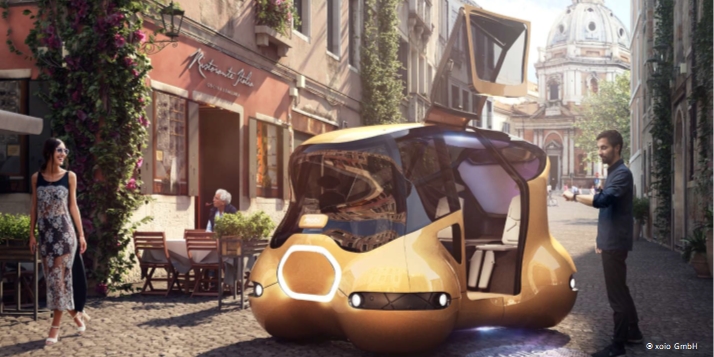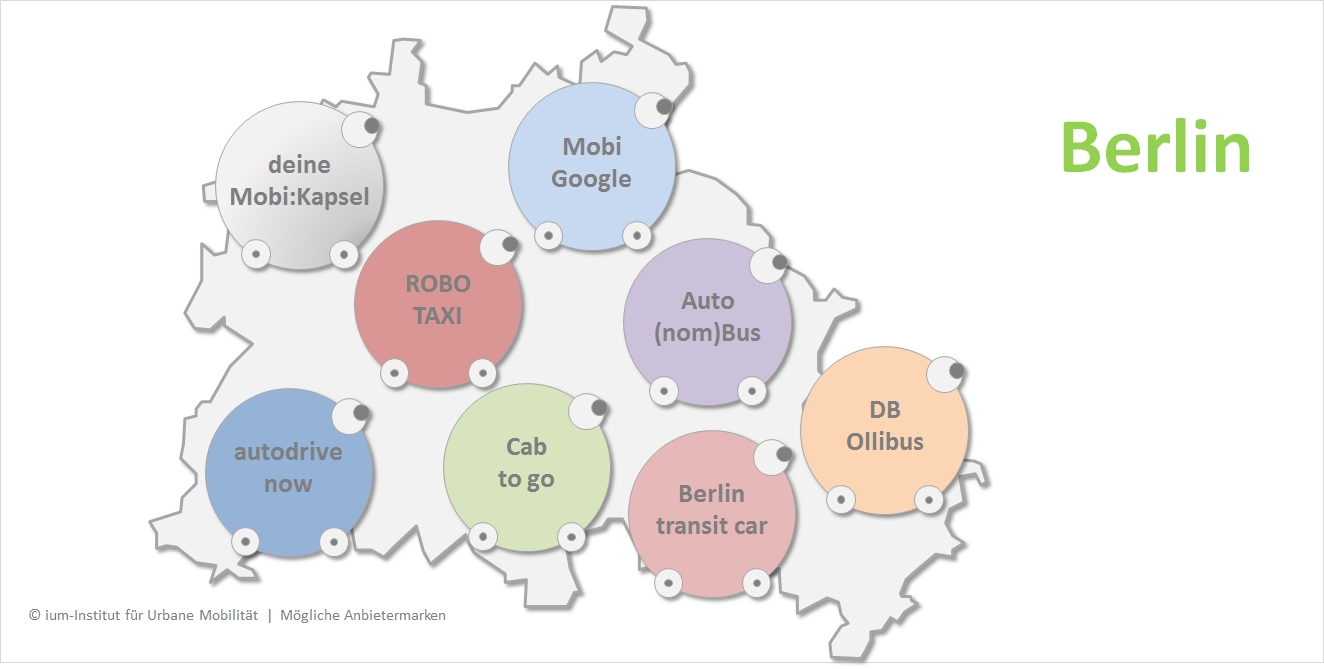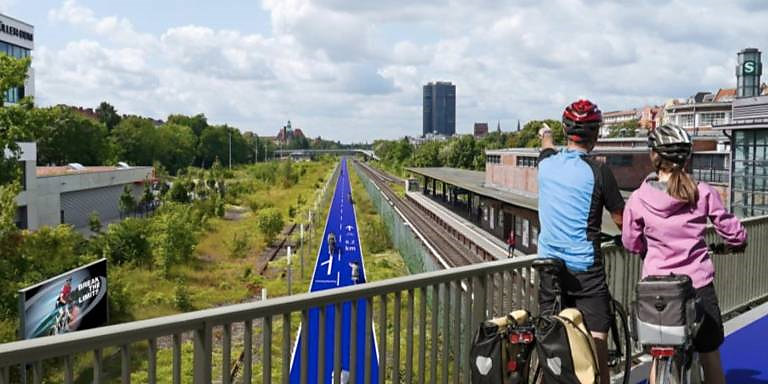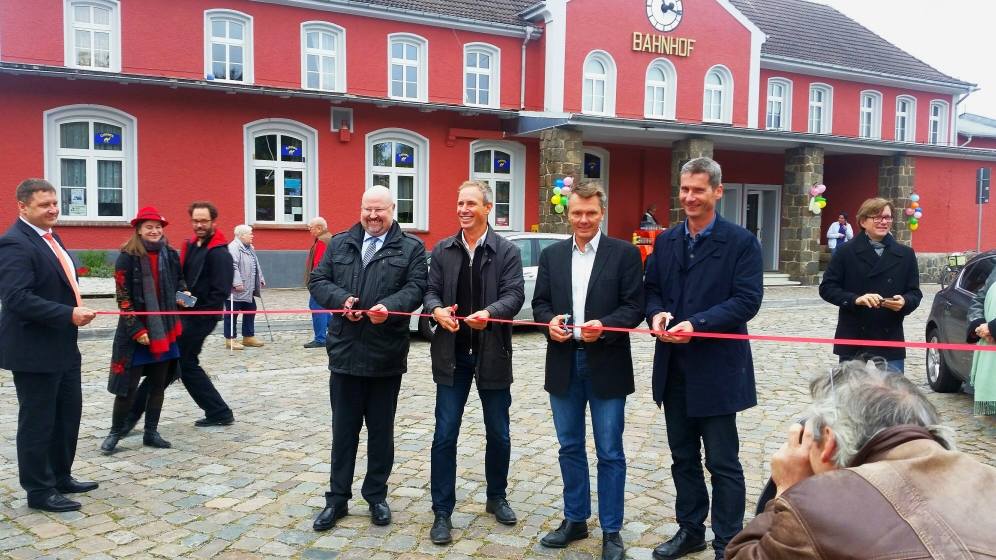Autonomous driving: how we design the beautiful car mobility of tomorrow

There is often a lack of imagination that brings well-organized mobility for all road users. While Germany is still in the diesel-cartel shock, we are already working on the beautiful car mobility of tomorrow. Our autonomous urban vehicle "Mobuno" is the first secured mobility concept that thinks of infrastructure and vehicle holistically - we speak of an authentic car mobility. It offers individual, convenient, social mobility and it is accessible for a favorable price of only 5 ct / km average. The vehicle is easily accessible and covers large areas 24 hours a day 7 days week.
Mobuno offers many first-class features: very comfortable, ergonomic seats, a minibar with chilled beer, plenty of room for the passengers to set up their own individual space. There are unlimited possibilities for features and services that are easily controlled by its app such as lighting control, on-board entertainment with music, movies and information on road conditions. Mobuno will mainly be used as a "shared ride" and a "social ride" with friends of course. When booked as a private "single ride" it brings forth a more individual ride experience than current options on the market today. All mobility needs are flexibly met; from the configuration as a commuter, shopping, travel or conference sedan to the city van. The urban automobile avant-garde market is getting ready for Mobuno.
However, Mobuno is not just designed to improve passenger experience. Mobuno is also good for people out in public places - the street will come to life again. In inner cities, significant fewer vehicles will be on the road, the number can be reduced by up to 97% - with out losing, but rather improving, individualized car mobility. Cars parked on the street will be a thing of the past. Mobuno can make Vision Zero (zero car-responsible fatalities) possible, ending serious accidents caused by today’s non-steady, forward-looking driving style. Last but not least, Mobuno will create many new jobs. Today's industrial jobs will change, as in other industries, and there will be a blending of industries. For example, mobility services will incorporate gastronomy services through the operation of minibars inside vehicles that may be served by cargo bikes. A big thanks to xoio for the prototype concept and the mobile vehicle design, set around wonderful Italian settings. Download the Xoio press kit
The Mobi-capsule. From automobility to auto-mobility

Berlin in the year 2050: a very livable city, because in the last 30 years the private cars that were so popular at the beginning of the millennium were completely replaced by Mobi-capsules. Today there are around 40,000 such fully automatic vehicles in Berlin, which are offered by eight different operators. At that time, people could not believe that it would be possible to offer more and better motorized individual mobility than with the 1.2 million private cars on the road.
The technology of autonomous driving had its breakthrough in 2020, transforming the public space landscape. The then very powerful automotive industry, the lobbyists of public transport and the digital corporations flooded cities with new vehicle fleets, competing for space with the existing private cars. Public space seemed to be bursting, until the first few cities introduced a car quota. With active modal split management and a transformation path of more than 30 years, Berlin has become one of the world's first major cities to switch from automobiles to an “auto-mobility” of 100%. This made public space much more attractive and secure for citizens.
The Mobi-capsule, developed by the IUM Institute for Urban Mobility, is the first urbanized individual vehicle to think holistically about infrastructure and the vehicle. The Mobi-capsule is a mix of the conventional car without a steering wheel and the minibus without the driver. They are available in different sizes, carrying from one to twelve passengers; most common are those that carry two, four and six. On board the Mobi-capsule there are not only very comfortable seats and individual lighting settings, there are many new amenities offered, which were not found in conventional cars in 2020. One such amenity for example is the minibar, always storing fresh, cold beer and other drinks. The production and operation of the Mobi-capsules will also create many new jobs. And beside the significant improvements for urban mobility, it will also possible to easily reach Berlin's climate targets, among other important environmental targets. Download product development
The bicycle gets new ways through Germanys capital

Angefangen hat alles 2015 mit der Idee des Fahrrad-Highways entlang der Potsdamer Stammbahn von Mitte in den Berliner Südwesten. Der ium-Gründer Tim Lehmann hat damals eher nebenbei den EUREF-Investor dabei unterstützt, von der Deutschen Bahn AG eine Erlaubnis zur Errichtung einer temporären Baustraße über einem ungenutzten Gleis zu bekommen. "Was für 300m und Baulaster möglich ist, das muss auch auf 7 km Länge für Fahrräder möglich sein".
Die Idee war geboren und fand sofort viele Anhänger. Ende 2015 entwickelte sich in Berlin eine Art Crowd-Planning Prozess, denn von mehreren Seiten kamen weitere Vorschläge für neue Radinfrastrukturen, die nicht in die Kategorien der bislang existierenden Radwege passten. Die öffentlichkeitswirksamste Idee war die U1-Radbahn, eine Flanier- und Lifestylemeile für Radfahrer unter der Hochbahn U1 in Kreuzberg. Auch den Verantwortlichen in der Berliner Senatsverwaltung für Stadtentwicklung, Umwelt und Klimaschutz (SenUVK) wurde schnell klar: Berlin muss künftig in neuen Kategorien denken. Gerade in Kombination mit E-Bikes, deren Verkaufszahlen jährlich neue Rekorde schlagen, ist eine schnelle Radinfrastruktur sinnvoll. So kann sich die typische Fahrraddistanz, die heute bei 5 km liegt, auf 10 km oder sogar bis 15 km verlängern. Es liegt auf der Hand, welch enormes Umsteigerpotenzial vom Pkw dies bedeutet, vor allem bei Pendlern, die dann mit dem E-Bike schneller, entspannter, sicherer und gesünder zur Arbeit kommen.
SenUVK führt daher aktuell eine Machbarkeitsstudie durch, die die Möglichkeiten für ein Berliner Radschnellwegenetz untersucht sowie zwei erste Radschnellwege detaillierter beplant. Insgesamt sollen rund 100 km Radschnellwege entstehen. Erste Ergebnisse werden mit Spannung für Anfang 2017 erwartet, die komplette Studie soll Ende 2017 abgeschlossen sein. Download Konzept
The celebration of the re-opening of the Fürstenberg/Havel station building

Rund 80 km nördlich von Berlin liegt das hübsche Städtchen Fürstenberg/Havel. Viele Berliner kennen es von sommerlichen Radtouren oder Kanuausflügen durch die großartige Fürstenberger Seenlandschaft. Mit dem Regionalexpress der Linie RE5 ist Fürstenberg in einer knappen Stunde aus Berlin zu erreichen, so dass auch immer mehr Pendler es für sich entdecken, die in schöner Natur leben wollen. Wenn man mit der Bahn in Fürstenberg ankommt bot sich allerdings bis vor kurzem ein von vielen deutschen Kleinstadtbahnhöfen gewohnter Anblick: Das Bahnhofsgebäude war ein keinem guten Zustand.
Bis Mitte 2015 stand ein größerer Teil der Flächen leer. Der ium-Gründer Tim Lehmann hat das Gebäude von der DB erworben. Sein Ziel ist es, nach der sogenannten "Grassroot-Methode" das Gebäude auf einem sanften Weg gemeinsam mit den vorhandenen Mietern und Partnern vor Ort wieder wachzuküssen und attraktiver zu gestalten. Der erste große Schritt war der Abbau des Leerstandes, denn alte Bahngebäude müssen genutzt werden, um weiteren Verfall zu verhindern. Im Herbst 2015 sind engagierte Berliner Kunst- und Naturbegeisterte mit eingestiegen wollen im Rahmen eines "Time Sharing"-Projekts die ehemalige Bahnhofshalle, die Fahrkartenausgabe und die Gepäckabfertigung wiederbeleben, um dort künftig Räume für Kunst- und Zukunftsprojekte anzubieten.
Am 12.10.2016 wurde die sanierte Bahnhofsfassade gemeinsam mit Vertretern der Stadt, des Landes und der Bahn feierlich eröffnet. Somit ist der Bahnhof jetzt wieder zu einer echten Visitenkarte für Stadt und Bahn geworden. Die Sanierung wurde mit rund 10% der Baukosten durch das LEADER-Programm des Landes Brandenburg ko-finanziert. Im Jahr 2017 sind eine Mitfahrbank, eine Willkommens- und Informationstafel für Besucher, eine Büchertauschbörse sowie ein Wandgemälde mit der Geschichte des Bahnhofs neu entstanden.